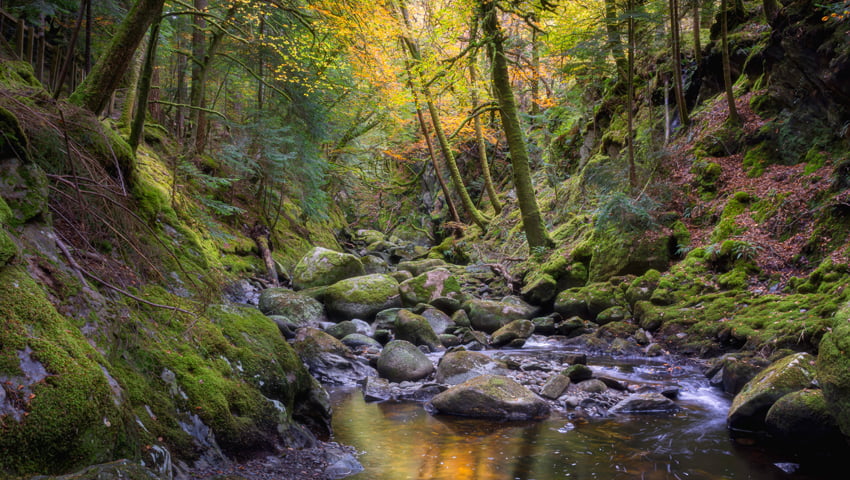The importance of modern forestry and wood production in sequestering carbon and tackling the climate emergency is well known. Yet the role they can play in slowing and reversing the ‘nature emergency’, which is becoming imperative across land uses, is less widely understood.
A Confor report from 2020 – Biodiversity, forestry and wood – provides a review of evidence on this subject in three main areas:
- The habitat value of forests planted for wood production,
- The potential of bringing neglected native woodland into management through the development of small-scale wood production and local supply chains
- The importance of a home-grown, low carbon resource in helping reduce the pressure to exploit natural and seminatural forests globally, tackling the drivers of biodiversity decline around the world.
Environmental NGOs were actively involved in the report’s creation. Not only did report author Eleanor M Harris gather evidence to show that commercial conifer forests represent valuable habitats for wildlife, but she was in constant dialogue with researchers and environmentalists, taking on board the comments and constructive criticisms she has received.
A Confor spokesperson said, “The benefits of forestry in the context of climate change have been increasingly highlighted in the general media. However, there is always a backlash to sudden, positive media attention; in the case of forestry, environmental organisations have argued that commercial forests will exacerbate the nature emergency, and that native woodland should be planted instead.
“Confor has never denied the value of native woodlands as habitats for wildlife; however, it was important to come up with evidence that productive forests can also deliver for biodiversity, and that managing native or broadleaved forests for timber can have a positive effect on wildlife habitats.
“We realised that there was no comprehensive study to provide an evidence-based argument that would hold up in discussions with opponents of productive forestry. The report is aimed primarily at policymakers, who are making key decisions about planting targets, wood use, environmental support, woodland approval processes, which will shape our forests for decades and centuries to come.”
The report, Biodiversity, forestry and wood, demonstrates that biodiversity, forestry and wood can go together, and is a useful tool to communicate what the forestry and timber sector is doing to enhance biodiversity.
Key themes and messages in the report are as follows:
Commercial forests have significant biodiversity value
A substantial body of science suggests that, at present, the forests planted in the UK for wood production have significant value as a biodiversity habitat, in spite of their young age and largely non-native species. Evidence-based management measures have become standard forestry practice in enhancing these maturing habitats, such as creating structural diversity and incorporating native tree species.
Wood production can improve condition of native woodlands
UK woodlands include native forest habitats of global importance, yet the majority of these are degraded and fragmented, with priority species showing declines. This report surveys evidence to argue that wood production can make a threefold contribution to nurturing these into ecological health through:
- Sensitive extraction such as thinning and coppicing
- Promoting tree growth and forest regeneration for example by preventing browsing damage
- Providing a sustainable income stream to fund active management and create value for the owner, as the basis for high quality native woodland expansion
Home-grown wood is important for biodiversity
Wood production sequesters carbon, provides the raw material for green jobs and low-carbon manufacturing, and reduces the UK’s reliance on imported timber which may be harvested unsustainably from natural forests. They provide natural capital benefits like reducing flooding and improving air quality. Wood-producing forest in the UK helps to tackle the fundamental causes of nature decline at a global level by reducing our demand for resources produced elsewhere.
Knowledge, tools and frameworks to deliver wood production and biodiversity benefit
UK forests are already delivering biodiversity benefits, and these are increasing as forests mature and are brought into modern design and management standards. Yet multiple barriers to woodland creation and management remain, resulting in missed opportunities to develop the potential to increase production of the renewable materials our economy needs in ways that enrich nature. In the face of the climate and nature emergencies these opportunities must be seized.
Further research
These include new woodland creation, management advice on important UK species assemblages, restoration of woodland ecology beyond the trees, studies of forestry within the wider landscape, invertebrates, the ecology of the forest floor, and interactions between forest biodiversity and public access.
